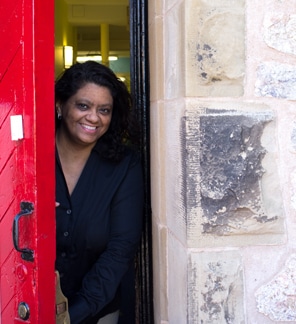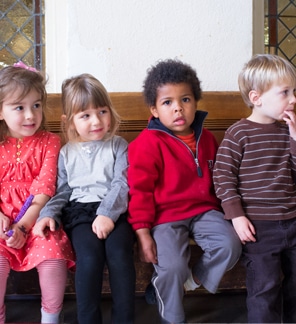Difficult behavior in children is one of the most common challenges parents and educators face. A positive approach on how to handle these difficult times can turn a situation from an obstacle into an opportunity. Our methodology behind positive discipline is based on the belief that each child is unique. The key element in helping children develop to the fullest of their capabilities lies in discovering who they are. When we have knowledge of who the child is, what their personality is, then it is up to us as adults and educators to gather and implement the tools we need to help the child grow and learn. It is important to try to see behavior without judgment. There is no good or bad, just the journey and the opportunities for learning that come with it. There is never a need to “change” who a child is. There is just simply a need to know who that individual child is and do what we can to help them achieve their true potential.
The first step in helping children manage difficult behavior is to understand where a behavior is coming from. If you look at aggression as an example of challenging behavior, the first step in the process would be to ask: What is the aggression really about? What is the child trying to communicate and how can we help them find a better way? What purpose is this behavior serving? It might be that the “aggressive” behavior is the only way this child knows how to get what they need. The behavior is essentially assertive in nature, albeit socially unacceptable. We can now look at the trait in a different light and see it as “assertive” as opposed to “aggressive.” The goal then becomes to try and help the child find a socially acceptable way of expression.
Discipline should always be implemented with the goal of promoting and teaching positive behavior while diminishing and channeling negative behavior. Techniques for positive discipline need to be consistent, reasonable and appropriate in their application and should be based on the needs of that child, at that moment. Through experience, we have found it invaluable to involve children in the process from the very start. When children give their input for rules, procedures, and even consequences, they are more succesful in understanding and managing the emotions around difficult situations. Phrasing guidance in a positive manner and depicting it in both words and pictures allows children to more easily interpret what is being asked of them. These rules are the basis for a positive experience for all children.Our program is designed to allow the children to move freely around the classroom with limited teacher interference. Each classroom is child centered and a safe environment where children can explore and learn independently in order to give children as many opportunities to lead the process as possible. The goal is always to praise positive behavior and help re-direct negative behavior. As adults, it is up to us to guide children as they verbalize feelings and release tensions in a safe and socially acceptable manner.
Once positive discipline is seen as a way to teach a child, rather than to correct a child, the whole process of dealing with challenging behavior becomes re framed as an opportunity rather than an obstacle. At Pine Village, we have developed a checklist for practicing positive discipline. It is a guide to the process and uses questions we can ask ourselves in the role of the adult and facilitator. The checklist can be used by educators, parents, and any care giver who wants a positive approach to behavior management. Below are the questions outlined on the checklist.
1) Have I stepped back to try to understand WHY this happened? (Is the child tired, sick, or hungry? What happened right before? Is this normal for THIS child? Are there any special needs for this child?)
2) Can I change the environment to support the child? (Switching areas, making the space bigger, providing more or different materials?)
3) What is my body language saying? (Am I relaxed, do they sense my stress, am I at their level?)
4) How is my tone of voice? (Is it low and firm or am raised and authoritative?)
5) Am I using the word “no” at all? (How can I phrase it in a positive way? For example instead of saying “No hitting” can I say “Gentle hands”?)
6) What is the teachable moment in this situation? (What is the behavior serving? How can I support self-regulation, problem solving, communication skills etc…)
7) How can I involve the child or children in the solution?
8) What technique or techniques can I try? (Does the consequence make sense for the behavior?)




